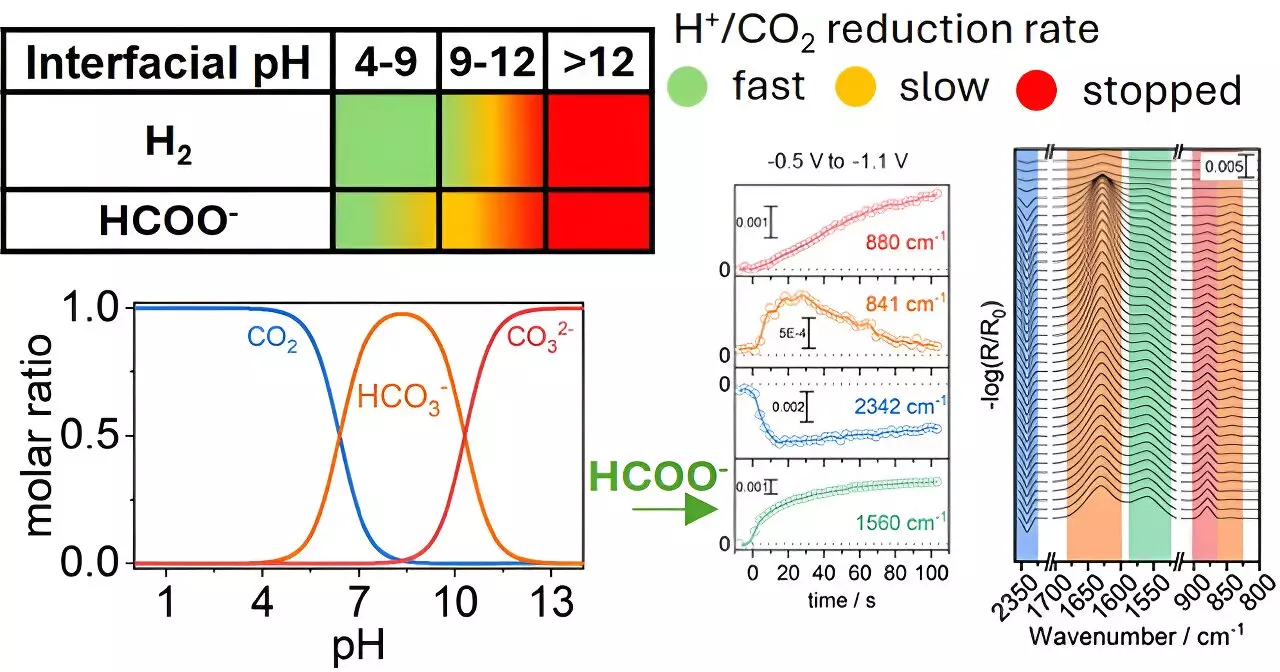The quest for effective strategies to reduce carbon dioxide (CO₂) emissions has garnered significant attention in recent years. With the rise of environmental concerns, researchers are increasingly focusing on transforming CO₂ into valuable resources. A breakthrough study from the University of Twente’s Department of Chemical Engineering, led by Georgios Katsoukis, sheds light on a crucial aspect of this process—the chemical environment surrounding copper electrodes. By understanding how this environment affects the conversion of CO₂ to formate, a chemical pivotal in various industrial applications, this research is poised to advance CO₂ reduction technologies significantly.
In their groundbreaking research, published in ACS Catalysis, the team investigated the interplay between CO₂ molecules and copper electrodes within an aqueous setting. Through systematic alterations of the pH levels near the electrode, the researchers found that these local chemical conditions critically influence the efficiency of CO₂ conversion. This revelation suggests that optimizing the environment around catalysts may be just as vital—if not more so—than the catalyst material itself in achieving selectivity for desired products.
Traditionally, the scientific community has concentrated its efforts on enhancing catalyst properties, neglecting the broader chemical milieu that impacts reaction outcomes. The findings from this study challenge that paradigm, prompting a reevaluation of how we approach catalyst design and CO₂ reduction strategies. The implications of this could reframe the entire field of sustainable chemical synthesis.
One significant implication of Katsoukis’s research is the potential for increased selectivity during CO₂ reduction reactions. Inefficiencies often arise during these processes due to the formation of multiple products, complicating the extraction of desired resources. By refining the local chemical environment, specifically through pH manipulation, researchers may discover ways to steer reactions towards the production of formate while minimizing byproducts.
Moreover, this research could extend the operational life of copper electrodes by minimizing the wear and tear that can occur during suboptimal reaction conditions. Such advancements not only promise to enhance the longevity of these materials but also contribute to the overall sustainability of carbon conversion technologies, aligning with the goal of creating a circular economy.
The study provides a compelling framework for future research, emphasizing the necessity of a dual focus on both catalytic properties and environmental conditions. By adopting a holistic approach, scientists can strive to improve the ECONOMIC viability and efficiency of CO₂ reduction processes. The ability to fine-tune the chemical environment could lead to a new generation of selective and efficient systems, moving us closer to responsible management of greenhouse gas emissions.
The research led by Georgios Katsoukis represents a pivotal step towards optimizing CO₂ reduction technologies. By acknowledging and manipulating the chemical surroundings of catalysts, we can develop practical applications that not only convert CO₂ emissions into useful chemicals but also foster a more sustainable future. This study encourages the exploration of chemical environments as a critical factor, paving the way for innovative solutions within the domain of environmental chemistry.

